We left Montevideo on a bus bound for Salto in North Western Uruguay, a six and a half hour journey. We were soon out of the city, through rural suburbs of single story houses and into the countryside, heading north on Ruta 3.
Although this is one of the major roads through Uruguay, it was mostly no more than two vehicles wide and we passsed very little traffic en route (although quite a few dead cars and trucks in the fields beside the roads). Most of the countryside was very flat, initially with some cattle grazing it and later with acre upon acre of cereal crops. We crossed several rivers, all incredibly swollen and overflowing, hinting that although it was a really lovely sunny day, there may have been a lot of rain in these parts too.
It amused us en-route to see a school bus bearing the message to the kids 'Haces tu deberes!' (‘Do your homework!’) but unfortunately we didnt have the camera to hand to record it so you’ll just have to believe us.
Although Salto is the second largest city in Uruguay it only has a population of 101,000 and a few streets away from the centre it soon feels quite rural. It is known for the nearby thermal springs at Las Termas de Dayman, about 7km away, which apparently attract visitors from around Uruguay and Argentina. However, it seems that these days most of the visitors stay at the boutique spa resorts and hotels that have sprung up around the springs rather than in Salto itself, which is distinctly untouristy.
We settled in to our room at Hostal del Jardin which is a two storey row of terrace-like rooms (think Butlins) behind the main part of a house, facing on to a small garden. We then went off to explore town and came upon music, dancing and several hundred children and adults celebrating International Children’s Day. It was a lovely atmosphere and a very lively welcome to Salto.
The mobile peanut seller with his bike decided to strike up conversation with us in front of speakers blaring out loud music, making it doubly hard to understand. He was very friendly even if we don’t know what he was talking about and he gave us a couple of free peanuts!
Overnight there was the obligatory thunderstorm and lots of rain. The following day we got incredibly wet, despite our waterproofs and umbrellas. In a brief interlude we happened upon an amazing wall consisting of huge chunks of semi-precious stones. They were really nice and glittery after all the rain, but there seemed no explanation as to why a baker’s shop would have such extravagant surrounds.
We also found an unusual church with had been burnt out and abandoned and would make a really good conversion project. It needs a good clear out and definitely needs a new roof , but there’s a lot of potential. Don’t worry, though, we’re not really considering relocating to Uruguay.
The museums in Salto open 3pm – 8pm, so the usual contingency plan for rain was disrupted. We spent some time in the bus terminal getting our tickets to leave the town and watching the rain. In the end we braved the elements and were rather wet when we finally arrived at the museums. The museum of fine art and sculpture is housed in a beautiful old mansion which still retains many of its original features and is a fabulous place. Now most of the rooms are exhibition spaces, but the bathroom has been retained and has an amazing shower consisting of a chrome framework surrounding the shower and blasting water at you from above, underneath and sides! A kind of 1920 precurser of the modern power shower enclosure.
At the rear of the house is a modern extension housing temporary exhibions, the current one being sculptures made from condoms! Interesting! Although our Spanish is improving we still only understand a fraction of what people are saying to us. The woman here raised her eyes to heaven as she entered the exhibition and rattled on animatedly. We think she was telling us that lots of children visit the gallery and she can’t really show them this exhibition. She asked the curator what he thought she should say to children about it and he said it was about music and life, but she couldn’t see it (and we couldn’t really see it either!)
The Museum of Man and Technology is housed in the old iron and corrugated central market which, at the time of our visit, had water dripping through the roof on to some of the exhibits and several areas were in darkness. The power box with its tangle of cables behind one of the non-working interactive exhibits ought to have been an exhibit itself.
This was another eclectic museum with various small collections, our pick of the day being the Collection of Barbed Wire 1870 – 1880.
Sunday arrived with brilliant sunshine and we made our way via public bus to the Thermals baths at Dayman. The woman at the tourist office had very helpfully circled the exact place on the map where we should get the hourly bus.
Unfortunately she was two blocks out so after half an hour waiting we got better information from Joe Public and found the bus stop. However, our wait in the wrong place took us down to the port, which at present is actually in the river, along with Plaza de 1st Mayo and the Museo de Rio (the Museum of the River) as the river has swollen and flooded so much. At last we have enough Spanish to make a joke: No es el Museo del Rio, es el Museo en el Rio!
Dayman is a ‘village’ built up around the thermal spas and is basically loads of hotels of varying quality, some with their own thermal pools, and lots of stalls selling tourist tat. A bit like Cleethorpes but with hot springs instead of mud. We avoided all this and made our way to the municipal Termas de Dayman where, for the princely sum of £2 each we could spend all day 7am – 11pm in a big grassy park with lots of different pools and showers of varying types, all fed by the incredibly hot thermal springs, some just too hot to get into.
It took a while to work out the system but we eventually clued into the grading system for the pools to show how hot they were. We graduated from Grade 4 to 5 to 6 but grade seven was a bit like immersing yourself in a casserole and we stopped at that point. There were also a few small hotspot pools that were so hot it was painful just putting your toe in! As it was obviously the first dry and sunny day for ages people kept arriving all day and by eight o’clock when we left the place was really full. The trick is to bring your folding chairs, a picnic and your maté set and enjoy the day!
PS I don’t think we have written before about maté, which is the obsession of many, if not all, argentinians and urugyuans. Maté is ground up leaves of a tree, used to fill up a hollowed gourd (also called a maté) to which hot water is added. The green sludge produced would be undrinkable so they use a metal strainer/straw to sip the liquid. It is normal to keep adding more water and passing the maté round. The end result is that many people walk around constantly with their maté in one hand, the straw in their mouth and a thermos of hot water tucked under their arm. A few use the more organised system of a leather holder for the flask, cup and spare dry maté for their next brew and cafes expect to provide extra hot water for people’s flasks but few sell maté themselves. Our experience is limited, the stuff smells and tastes chronic (but probably great if you grew up with it) and we had some spilled on us from a balcony in BA and it was a nightmare to get off our clothes!
Today is our last day in Salto and we catch a bus in the mid-afternoon. Last night at midnight after a lovely day at the springs and in the balmy evening, with crowds of families all around (most coming out to eat after 11pm) we were thinking lovely things about the town. But today it is pouring with rain again after thunderstorms all night and the place seems somewhat less attractive.
Salto; hot springs, wet rain
Monday, November 23, 2009
 Salto, Uruguay
Salto, Uruguay
Other Entries
-
37Giru to Sarina
Sep 2361 days prior Sarina, Australiaphoto_camera5videocam 0comment 0
Sarina, Australiaphoto_camera5videocam 0comment 0 -
38Sarina to Kinka Beach (no, that was KinkA Beach!)
Sep 2460 days prior Kinka Beach, Australiaphoto_camera16videocam 0comment 2
Kinka Beach, Australiaphoto_camera16videocam 0comment 2 -
39Kinka Beach to 1770; that's a place, not a number!
Sep 2559 days prior 1770, Australiaphoto_camera48videocam 0comment 5
1770, Australiaphoto_camera48videocam 0comment 5 -
401770 to Rainbow Beach (but no pot of gold!)
Sep 2658 days prior Rainbow Beach, Australiaphoto_camera33videocam 0comment 0
Rainbow Beach, Australiaphoto_camera33videocam 0comment 0 -
41Beaches Wars! From Rainbow to Dicky!
Sep 2955 days prior Dicky Beach, Australiaphoto_camera23videocam 0comment 0
Dicky Beach, Australiaphoto_camera23videocam 0comment 0 -
42Dicky Beach to Brisbane: we made it!
Sep 3054 days prior Deagon, Brisbane, Australiaphoto_camera6videocam 0comment 2
Deagon, Brisbane, Australiaphoto_camera6videocam 0comment 2 -
43Brisbane: revisited and departed
Oct 1737 days prior Deagon, Brisbane, Australiaphoto_camera79videocam 1comment 6
Deagon, Brisbane, Australiaphoto_camera79videocam 1comment 6 -
44Buenos Aires: faded elegance
Oct 2826 days prior Buenos Aires, Argentinaphoto_camera32videocam 0comment 4
Buenos Aires, Argentinaphoto_camera32videocam 0comment 4 -
45Out and about in Buenos Aires
Nov 0122 days prior Buenos Aires, Argentinaphoto_camera66videocam 1comment 6
Buenos Aires, Argentinaphoto_camera66videocam 1comment 6 -
46Carlinhos Brown in Buenos Aires
Nov 0221 days prior Buenos Aires, Argentinaphoto_camera5videocam 0comment 1
Buenos Aires, Argentinaphoto_camera5videocam 0comment 1 -
47Rainy Days in Buenos Aires
Nov 0320 days prior Buenos Aires, Argentinaphoto_camera12videocam 0comment 0
Buenos Aires, Argentinaphoto_camera12videocam 0comment 0 -
48La Boca: Colour, life and tourist tat
Nov 0518 days prior Buenos Aires, Argentinaphoto_camera45videocam 0comment 0
Buenos Aires, Argentinaphoto_camera45videocam 0comment 0 -
49Madness, music and Las Madres
Nov 0617 days prior Buenos Aires, Argentinaphoto_camera19videocam 0comment 0
Buenos Aires, Argentinaphoto_camera19videocam 0comment 0 -
50Buenos Aires cafes and bars
Nov 0815 days prior Buenos Aires, Argentinaphoto_camera27videocam 0comment 4
Buenos Aires, Argentinaphoto_camera27videocam 0comment 4 -
51A very wet day in San Antonio de Areco
Nov 1310 days prior San Antonio de Areco, Argentinaphoto_camera36videocam 1comment 3
San Antonio de Areco, Argentinaphoto_camera36videocam 1comment 3 -
52Final days in Buenos Aires
Nov 185 days prior Buenos Aires, Argentinaphoto_camera90videocam 0comment 4
Buenos Aires, Argentinaphoto_camera90videocam 0comment 4 -
53Montevideo - it's not yet changed to Monte-DVD!
Nov 203 days prior Montevideo, Uruguayphoto_camera59videocam 0comment 5
Montevideo, Uruguayphoto_camera59videocam 0comment 5 -
54Salto; hot springs, wet rain
Nov 23 Salto, Uruguayphoto_camera49videocam 0comment 4
Salto, Uruguayphoto_camera49videocam 0comment 4 -
55Fray Bentos; that sounds familiar!
Nov 252 days later Fray Bentos, Uruguayphoto_camera48videocam 0comment 0
Fray Bentos, Uruguayphoto_camera48videocam 0comment 0 -
56Colonia; every house a museum?
Nov 285 days later Colonia del Sacramento, Uruguayphoto_camera46videocam 0comment 6
Colonia del Sacramento, Uruguayphoto_camera46videocam 0comment 6 -
57Buenos Aires - Slight Return
Nov 307 days later Buenos Aires, Argentinaphoto_camera33videocam 3comment 4
Buenos Aires, Argentinaphoto_camera33videocam 3comment 4 -
58Hot News! Uruguay election results!
Dec 018 days later Buenos Aires, Argentinaphoto_camera1videocam 0comment 0
Buenos Aires, Argentinaphoto_camera1videocam 0comment 0 -
59What makes Rosario such a good place to live?
Dec 0310 days later Rosario, Argentinaphoto_camera60videocam 0comment 8
Rosario, Argentinaphoto_camera60videocam 0comment 8 -
60Mercedes; final resting place of Gauchito Gil
Dec 0613 days later Mercedes, Argentinaphoto_camera33videocam 1comment 0
Mercedes, Argentinaphoto_camera33videocam 1comment 0 -
61Pellegrini; floating islands, crocs and big rats!
Dec 0815 days later Colonia Carlos Pellegrini, Argentinaphoto_camera73videocam 0comment 2
Colonia Carlos Pellegrini, Argentinaphoto_camera73videocam 0comment 2 -
62Your mission, if you choose to accept it...
Dec 1118 days later San Ignacio, Argentinaphoto_camera37videocam 1comment 1
San Ignacio, Argentinaphoto_camera37videocam 1comment 1 -
63Iguazu falls: so that's where all the rain went!
Dec 1522 days later Puerto Iguazú, Argentinaphoto_camera47videocam 2comment 1
Puerto Iguazú, Argentinaphoto_camera47videocam 2comment 1 -
64Out of Iguazu with a bang; on to Ciudad del Este
Dec 1623 days later Ciudad del Este, Paraguayphoto_camera10videocam 0comment 1
Ciudad del Este, Paraguayphoto_camera10videocam 0comment 1 -
65Encarnación - and we manage to see Jesús!
Dec 1825 days later Encarnación, Paraguayphoto_camera55videocam 0comment 2
Encarnación, Paraguayphoto_camera55videocam 0comment 2 -
66Asunción; we're travellers, get us out of here!
Dec 2027 days later Asuncion, Paraguayphoto_camera11videocam 0comment 2
Asuncion, Paraguayphoto_camera11videocam 0comment 2 -
67Xmas greetings!
Dec 2128 days later Resistencia, Argentinaphoto_camera1videocam 0comment 7
Resistencia, Argentinaphoto_camera1videocam 0comment 7 -
68Resistencia: city of sculpture
Dec 2229 days later Resistencia, Argentinaphoto_camera41videocam 0comment 0
Resistencia, Argentinaphoto_camera41videocam 0comment 0 -
69Our 'current' location
Dec 2330 days later Corrientes, Argentinaphoto_camera24videocam 0comment 1
Corrientes, Argentinaphoto_camera24videocam 0comment 1 -
70Salta: our first sight of the Andes and our Xmas!
Dec 2532 days later Salta, Argentinaphoto_camera35videocam 3comment 3
Salta, Argentinaphoto_camera35videocam 3comment 3 -
71Multicoloured mountains and angels with guns!
Dec 2734 days later Humahuaca, Argentinaphoto_camera53videocam 0comment 1
Humahuaca, Argentinaphoto_camera53videocam 0comment 1 -
72Following the Train To The Clouds
Dec 2936 days later San Antonio de los Cobres, Argentinaphoto_camera81videocam 0comment 0
San Antonio de los Cobres, Argentinaphoto_camera81videocam 0comment 0

 Salto, Uruguay
Salto, Uruguay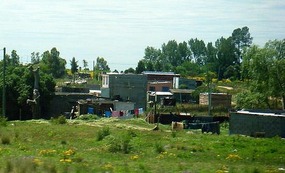

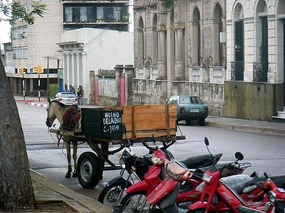
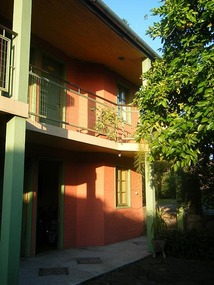
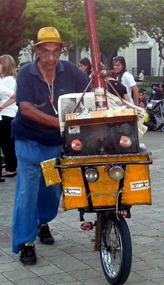
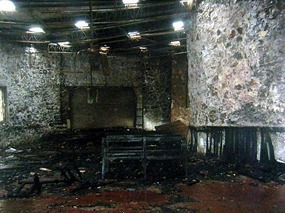
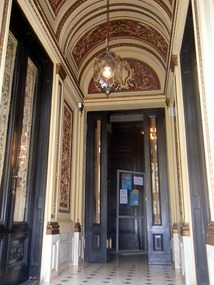
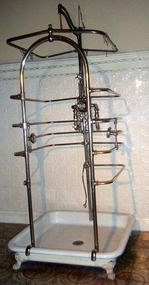

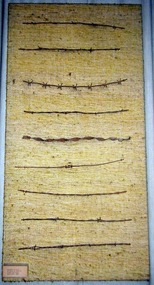
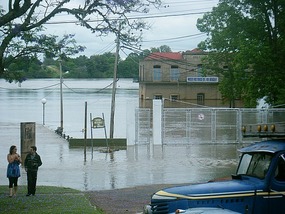
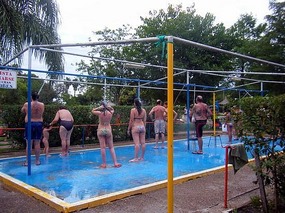
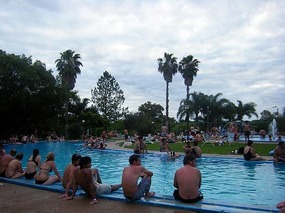
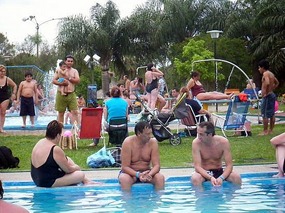





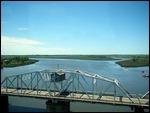

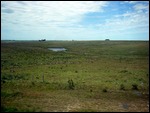
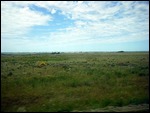
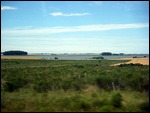
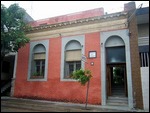

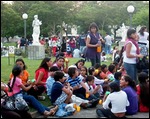

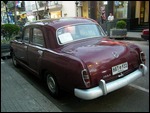
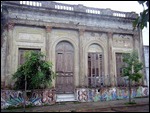
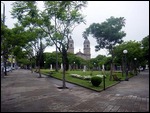
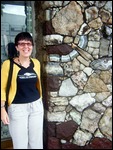
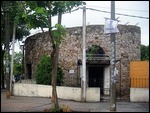

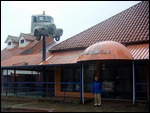
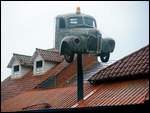
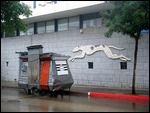
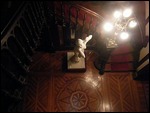
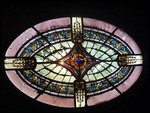
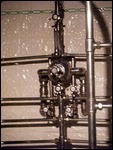
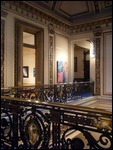
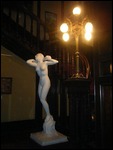

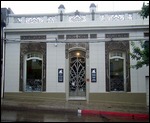
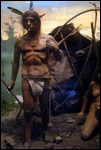
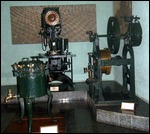
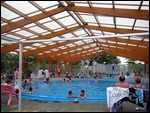
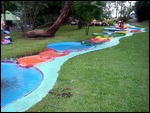


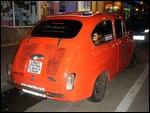
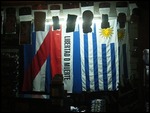
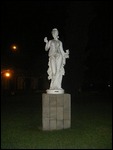
2025-05-22